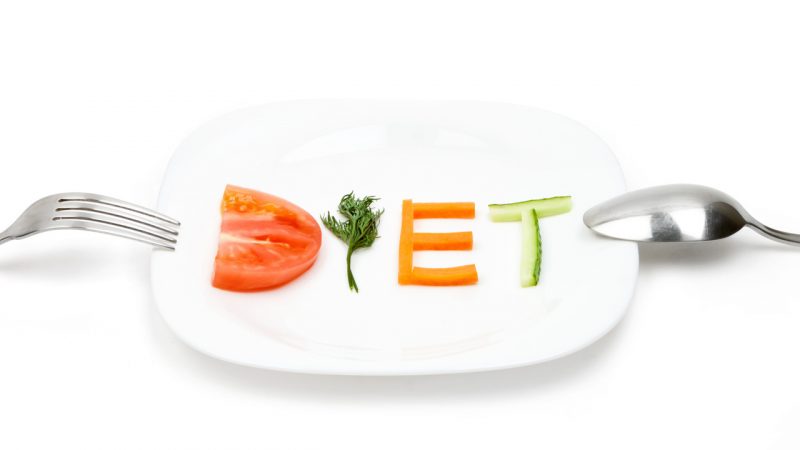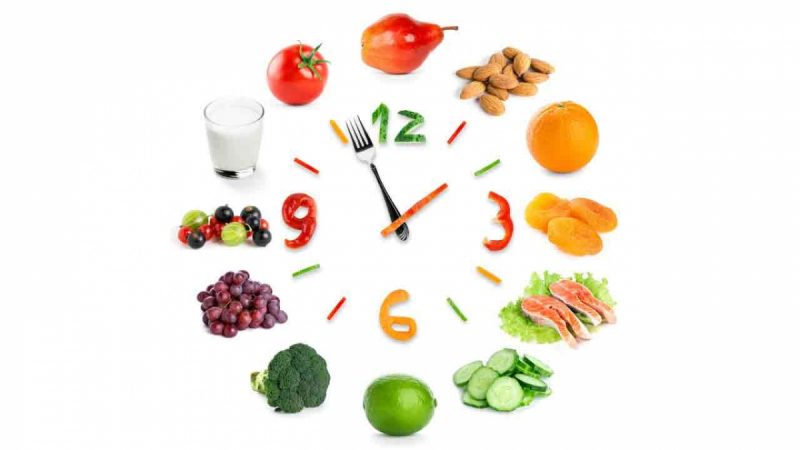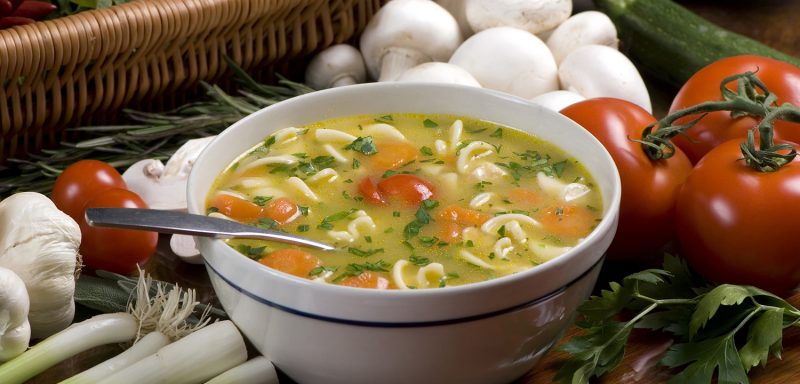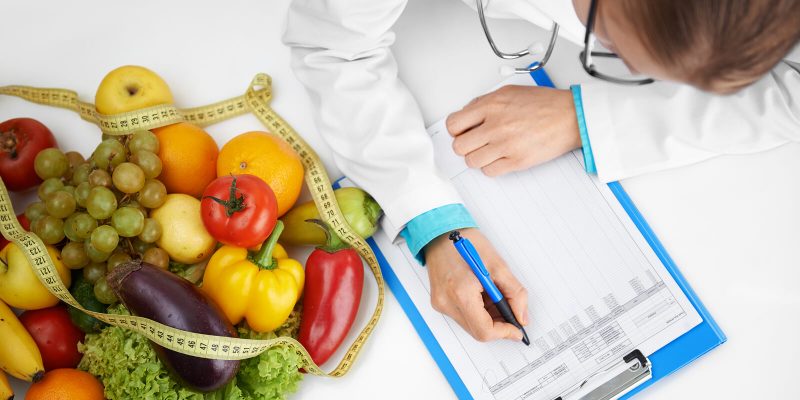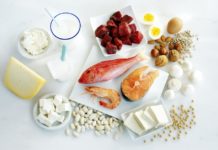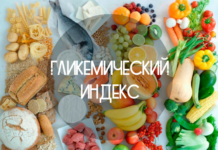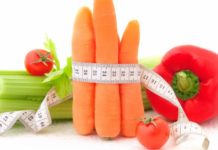A person who first encountered a pathology of the digestive system has to face a huge list of recommendations and prohibitions. It seems that all existing and familiar products are no longer available, and therefore a logical question arises: how to live on? The article will detail the principles of a sparing diet.
Material Content:
The basic principles of a sparing diet for diseases of the gastrointestinal tract
In fact, the recommendations are not as strict as it seems at first glance. You can create a menu that meets all the requirements of the prescribed sparing diet for gastrointestinal diseases on your own, the main thing is to understand the basic principles.
- First of all, you need to understand that coarse and fried foods irritate and tone the muscle walls of the gastrointestinal tract. Therefore, fresh vegetables, fiber meat should be boiled well, and then passed through a blender. That is, cream soup should be preferred.
- Also, a large percentage of fats in the ingredients can provoke an exacerbation of diseases of the biliary tract, so you should pay attention to this when choosing them.
- Smoked, sausages, liver pastes, liver, dried and salted meat, pickled products, mushrooms, canned food are highly not recommended, since all this is extremely difficult food for assimilation.
- You should refuse coffee, cocoa, cocoa products, carbonated and energy drinks, alcohol, because these products cause vasodilation in the walls of the stomach and intestines, which will lead to exacerbations and complications.
- The use of products that provoke fermentation in the stomach is contraindicated. This applies to fresh bread, legumes, coarse fiber foods.
- Bile is produced in the body constantly, it is extremely important to prevent its stagnation. For this purpose, it is recommended to snack every 4-5 hours in reduced portions, carefully chewing each bite.
List of prohibited and permitted products
Surely any person who first encountered a diagnosis, at first it will be quite difficult to navigate in the selection of products. Of course, each particular table has its own nuances, depending on the course and symptoms of the disease in each individual patient. But the products below reflect the basic principles of food preparation and selection of ingredients.
| Valid | Prohibited |
|---|---|
| • veal, tenderloin of young beef, chicken, turkey, rabbit; • low-fat fish: hake, cod, pollock, flounder, pike perch; • eggs of young hens, baked omelet; • lungs cottage cheese, yogurt, milk, fermented baked milk, kefir; • milk porridge (buckwheat, rice, oat, semolina); • boiled and mashed vegetables, especially cauliflower, zucchini, potatoes, pumpkin, peeled cucumbers; • mashed apples, pears, bananas, watermelons, melons, ripe cherries; • parsley, dill, bay leaf; • weak tea, compotes, jelly; • bran, crackers, stale bread; • mashed soups on vegetable and low-fat meat broths. | • fatty and grilled pork, beef, duck, lamb; • oily fish: fish in oil; • liver, kidneys, brains, jerky and salted meat, sausages; • cottage cheese, milk, cream with a high percentage of fat content; • cheeses; • fresh cabbage, turnips, radishes, sorrel, spinach, onions, garlic, radish, rutabaga; • wheat and barley porridge; • beans, lentils, peas; • mushrooms, mushroom broths; • sour fruits and berries, figs, prunes; • kvass, sour juices and fruit drinks; • strong tea, coffee, cocoa, chocolate, sweets; •ice cream; • carbonated drinks, carbonated mineral water, energy, alcohol; • pepper, mustard, ketchup, horseradish; •fast food; • sour cabbage soup, borscht, okroshka, pickle, soups with tomato pastes. |
Types of diets for diseases of the gastrointestinal tract
In Russian medicine, there are only fifteen therapeutic diets. In addition, some of them have additional subsections. But not all of them are suitable for people with lesions of the stomach, intestines or biliary tract. Only the first five are actively used to rehabilitate patients with similar problems. Each of them has its own characteristics, it is prescribed only for some specific diagnoses. This decision must be made by the doctor, as any of these diets has restrictions on calorie intake, food intake, chemical composition, violations of which can negatively affect a healthy person.
In short, medical diets or “tables” correspond to any conditions:
- Diet No. 1 is indicated for people with a stomach ulcer and duodenal ulcer outside the period of exacerbation. It has subsections A and B, which accompany certain stages of treatment and rehabilitation.
- Diet No. 2 is prescribed for hypoacid (with depressed secretory function) chronic gastritis, with sluggish and prolonged pathologies of the large and small intestines.
- Diet No. 3 is prescribed for people with frequent constipation.
- Diet No. 4 is recommended for patients with intestinal pathologies accompanied by diarrhea, and subsections B and C are aimed at maintaining the body at the time of transition to the normal healthy menu.
- Diet No. 5 is indicated for people with lesions of the hepatobiliary system: hepatitis, cholelithiasis, cirrhosis, cholecystitis.
Read also:swede
Diet "Table number 0"
This diet is prescribed to people in extremely difficult and unconscious states when they cannot eat on their own. This usually happens after extensive operations, including on the digestive organs, after acute cerebrovascular accidents, after concussions and bruises in the brain, and accidents.
The purpose of such a diet is the sequential inclusion in the diet of different consistency of food, in order to ensure peace for the digestive organs.
Table No. 0 has several types - A, B and C. Each of them implies its own meal schedule, calorie content, a list of allowed foods, and actually represents a stage in the patient’s rehabilitation. At the heart of this diet are three principles - thermal, mechanical and chemical effects. The first principle implies that food and drink consumed must have a body temperature. Subject to the second principle, all food is steamed and boiled, making its texture soft, and a large amount of coarse dietary fiber is avoided. The third principle involves the limitation of artificial additives, salt and sugar, strong tea, coffee, products that increase gas formation.
Table No. 0 A is, in fact, the first stage in the slow rehabilitation of the patient. It is intended for patients in very serious condition. Table No. 0 B includes expanding the list of products and increasing daily calories. Table number 0 V in its composition practically does not differ from ordinary food. It is indicated for patients close to recovery.
"Table number 1"
In another way it is also called "Diet number 1". It is indicated at the final stages of the body's recovery after exacerbations of stomach and duodenal ulcers, and also as a permanent menu for chronic stomach problems without features. The essence of "Table No. 1" is to avoid provoking increased peristalsis and secretion of the digestive system. Otherwise, it is an analogue of the usual set of products for people without any pathologies, while maintaining the recommended calorie content, the optimal amount of macronutrients.
Briefly formulate the main recommendations of the "Diet number 1", they will be as follows:
- Strict rejection of fatty, spicy, fried foods, coffee, strong tea.
- Avoidance of foods rich in fiber and coarse fibers: legumes, fresh vegetables, mushrooms.
- The ban on acidic juices, berries, fruits.
- The overflow of the stomach is unacceptable, that is, each portion should be moderate.
- The temperature of food is close to the temperature of the human body, that is, not icy and not burning.
In addition, there are subspecies of this diet that have features. So, “Diet No. 1 A” is prescribed in the first two weeks of various exacerbations, as well as in cases of burns of the esophagus. In principle, it differs from the main one only in the limitation of daily calories and the rejection of table salt. Table No. 1 B serves as an interim period after the restrictions of subsection A.
"Table number 5"
Diet table 5 is necessary for people suffering from liver problems and bile ducts. It helps to restore metabolic processes in the tissues of the hepatobiliary system. For these purposes, reduce the content of lipids consumed, as well as products that increase blood cholesterol (eggs, walnuts, oils).
Diet No. 5 A is designed to supplement the main treatment of exacerbations of pathological processes in the liver in combination with other diseases of the digestive system. That is, this is a kind of combination of the first and fifth tables. Also, another type of diet - 5P - is intended for people with pancreatitis. All principles are maintained, but along with a reduction in fat intake, protein intake increases.
Therapeutic diet according to Pevzner
The Soviet doctor, the founder of dietetics in Russia, M. I. Pevzner, developed a system of therapeutic diets, each of which corresponded to a disease. Its difference from the modern one is that today “Table No. 12”, which was prescribed for functional lesions of the nervous system, is excluded. In principle, since then these recommendations have not changed and are still used. In total, scientists were offered 16 nutrition systems, including a zero diet.
Sparing nutrition after appendicitis removal
Surely many who have suffered the removal of the appendix have wondered how and what to eat further, so as not to provoke complications? How long can tolerate restrictions?
On the first day, eating is strictly prohibited. This is due to the fact that in the first hours after the operation, the percentage of development of any emergency situations that require immediate intervention of the resuscitation team is large. And to save a patient with a full stomach can be difficult, as vomiting can occur involuntarily, which will fall into the lungs and cause respiratory arrest.
In the next 2-3 days, "Table 0" is assigned. Its characteristics are described above. At this time, warm, weak tea, broths of wild rose, rice broth, low-fat broth, non-acidic juices are allowed. Then next week “Table 1” is assigned, that is, the menu expands somewhat. Soups, mashed vegetables, dairy products are allowed.
Sample menu for the week
We present an approximate diet for a person who is recovering from surgery or a complication of the disease.
Day 1
Warm water in small sips for breakfast. At the end of the first day, rice broth or fruit jelly is allowed.
Day 2:
- non-fat natural yogurt;
- chicken bouillon;
- jelly;
- warm weak tea;
- rice broth;
Day 3:
- vegetable puree;
- sweet tea;
- chicken bouillon;
- low-fat yogurt;
- jelly;
Day 4:
- baked omelet, rice milk porridge, tea;
- baked apple;
- pumpkin cream soup, tea;
- decoction of oat bran, banana;
- boiled fish fillet, mashed potatoes;
Day 5:
- buckwheat milk porridge, soft-boiled egg, tea;
- cottage cheese casserole;
- rosehip broth, crackers;
- baked chicken fillet, mashed potatoes;
Day 6:
- milk oatmeal, steam omelet, tea;
- milk;
- vegetable cream soup, steamed fish fillet, squash puree;
- baked pear, tea;
- steam meat fillet, boiled rice;
Day 7:
- cottage cheese, banana;
- vegetable potato soup, baked meat, boiled rice;
- rice broth, crackers;
- boiled fish, mashed potatoes;
Contraindications
Therapeutic diets are a serious addition to the main treatment of various diseases. Despite the apparent safety, improper compliance can cause serious consequences. For example, errors in nutrition and self-administration in the absence of indications and an incorrect diagnosis can provoke various exacerbations, manifestations of complications, metabolic disturbances, which will aggravate the course of the main pathology.




